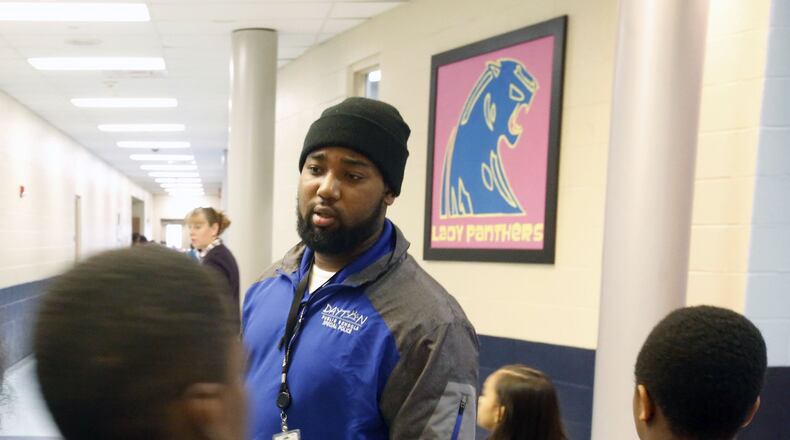As part of the Dayton Daily News Path Forward initiative that seeks solutions to our community’s most pressing issues, including improving Dayton Public Schools, our reporters looked into whether the program could be adopted by other districts. Officials told us it might not be practical for districts the size of DPS, though larger districts are increasing services to support students’ social-emotional needs.
Springboro Police Chief Jeff Kruithoff launched the Blue Line program in the fall. He said in talking to his wife, who is a teacher in the district, and reading about childhood development, he decided additional help should be available for the children his officers encounter.
Now officers report incidents with police to school resource officers, who pass the information along to counselors and teachers, when necessary.
“If a kid falls asleep in class … a teacher might jump to the conclusion he was texting all night with friends, but it could be we were out at their house at 12:30 in the morning and 2:30 on a domestic (violence call),” he said.
Kruithoff said teachers sometimes see changes in students — “Why has this kid who has been this bright, bubbly person all of a sudden turning into this surly, disrespectful kid?” — and wish they knew more about what was going on in their lives.
Schools: Communication helpful
The idea is similar to a program that existed several years ago that brought someone from the domestic violence shelter in Warren County out whenever there was a domestic violence call. But that was a grant-funded program and money ran out, Kruithoff said.
He said they haven’t started tracking how many Blue Line students there have been. But his department responds to domestic violence calls nightly, and many times children are in the home.
Springboro schools spokesman Scott Marshall said the program puts in policy a line of communication that has long been in practice. The district’s response can range from a heads-up for the principal to the involvement of district mental health professionals.
“The more people that are there to support the student, the more the students know there are resources available to help that student, I think that socially helps the student and academically helps the student and goes a long way,” Marshall said.
Kruithoff is a member of the Dayton Daily News Community Advisory Board, which advises the newspaper on its Path Forward coverage.
DPS Superintendent Elizabeth Lolli presented her turnaround plan for the district to the advisory board in November. At that meeting, Kruithoff talked to Dayton schools officials about whether a Blue Line program could work for them.
There are substantial differences between the two cities. Springboro has 30 police officers, Dayton has more than 300.
“It’s probably not workable in a large system like that because (the public safety director) just has so many issues going on, but it works pretty well here,” Kruithoff said.
Dayton police officials didn’t respond by deadline to questions about what resources are offered to children in homes where officers respond to reported crimes.
Dayton SRO: ‘I got their back’
Dayton Public Schools Public Safety Director Richard Wright, who oversees 36 school resource officers, said they are in constant communication with Dayton police and Montgomery County Children Services. They are notified whenever there is an off-campus allegation of a crime involving school property or activities.
Wright said they looked at the Blue Line program and decided it was impractical to implement in a city the size of Dayton — more than seven times the size of Springboro — considering the sheer number of police interactions and the number of schools, charter schools and private schools a child could be attending.
But while Dayton school officers aren’t notified every time police come to a student’s house, they keep an eye out for when a kid might be troubled.
Jordan Essex, a school officer at Kiser Elementary, said in addition to conducting emergency drills and checking backpacks, his job is to “just build a rapport with the kids, talk to them, make sure their day’s going good. Because if you know the kids, you can tell when they’re a little off and need a little more attention today than normal.”
“I come to school every day to make sure kids see a familiar face every day,” Essex said. “They know I’m here for them, I got their back.”
Dayton schools hired five mental health counselors to work at its elementary schools this year.
It’s part of a growing trend for schools across Ohio and the nation, according to Jeff Chambers, spokesman for the Ohio School Board Association. Programs like Blue Line might be something to consider for smaller districts, he said, while larger ones are working to meet a growing need for social-emotional support.
“There are so many things that impact a student before they even get to the classroom that have an impact on their learning, and learning process,” Chambers said. “I think you are seeing a lot more interaction with school districts and community agencies.”
About the Author

